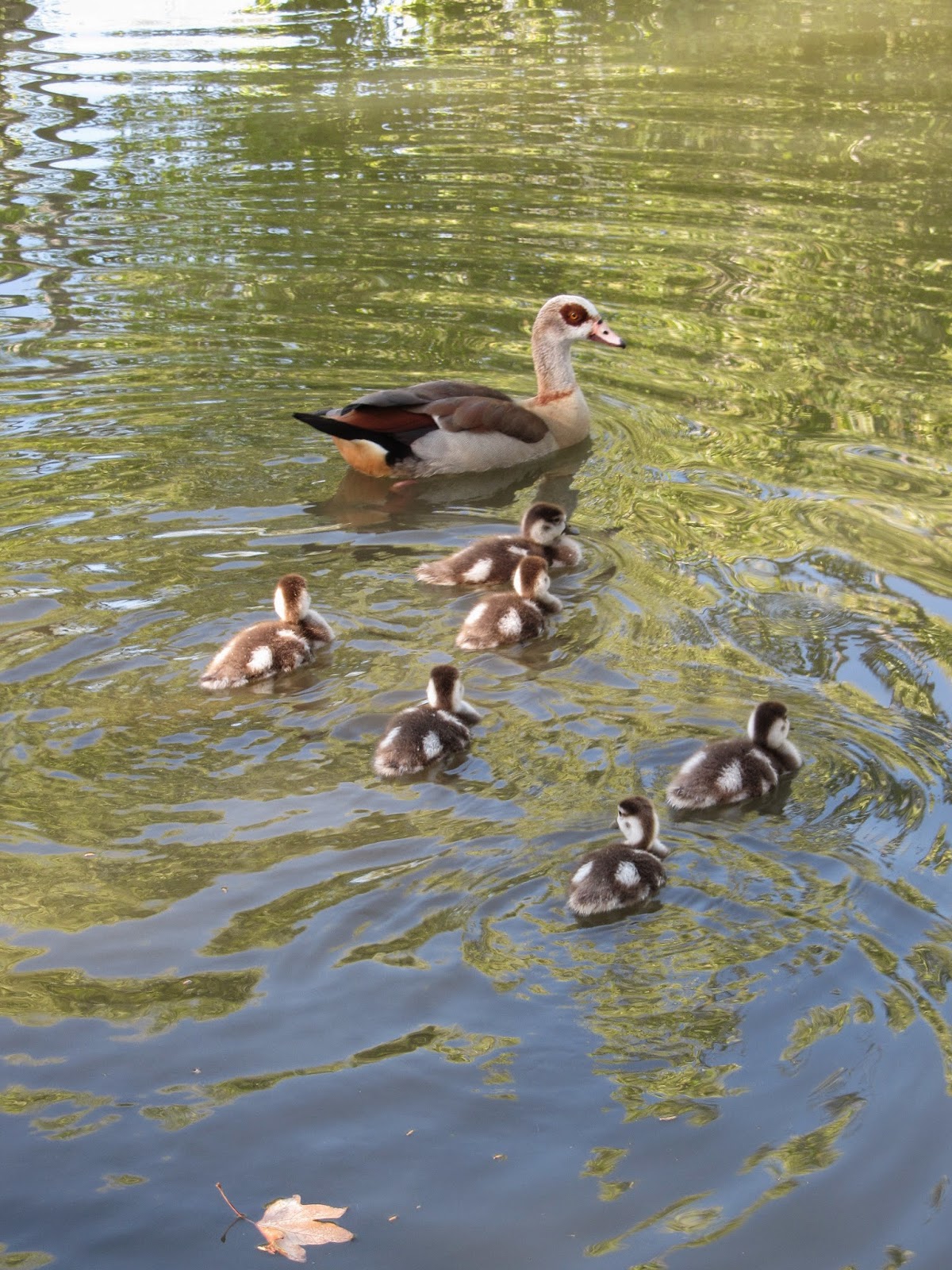Egyptian geese (Alopochen aegyptiacus) get classified in the National Geographic's bird books among the "exotic waterfowl," even though they're pretty common around here. They're also quite reliable breeders at Yorba Regional Park. Usually at any one time there are at least two breeding pairs producing two clutches of four to eight goslings each.
One of our first encounters with baby Egyptians is still one of our favorites. In December of 2012, we encountered a parade of geese: Mama, Papa, nine little ones, and Nanny. Nanny was a "barnyard" goose, with nobody else to call family, so she (he?) adopted this one. She was always present, very attentive and protective, and helped all eight little ones grow up. She helped with the next hatchlings, too, then disappeared.
 |
| January 2013 |
 |
| April 2013 |
 |
| January 2013 |
For a while, we knew where the nests were: on top of restroom buildings 2 & 4. But last year they replaced the skylights on the restrooms, and the geese haven't returned to nest there.
 |
| The "mullet" look: smooth feathers up front, fluff in back |
The mom and four adolescents are especially interesting. They started as a "regular" family -- parents and eight babies, plus a couple of adolescents from the last batch. We watched them for several weeks.
Then, suddenly, there was only one parent and only four babies. We still don't know what happened to the other half of the family, but probably predators wiped them out and hopefully the adolescents went someplace safer. The Fearsome Foursome seem to be doing OK, though we're concerned about Mom. If geese mate for life, as we've heard, what happens when one gets killed? Will she find a new partner? (There aren't many other adults to match up with.) Every time we visit and don't see them, or see only the Foursome, we worry, and hope that they've moved on to greener pastures.
 |
| The Fearsome Foursome - March 14, 2015 |
And last week's only-child family? Still there!
 |
| Like father, like son - April 11, 2015 |






No comments:
Post a Comment